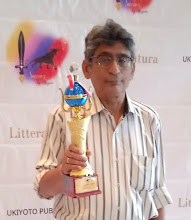Five polling phases of the 9-phase General or Lok Sabha (Lower House of Indian Parliament) Elections-2014 have been completed. The sixth phase polling is being conducted on Thursday, the 24th of April. In this phase Mumbai too goes to poll with its six Lok Sabha seats. In this last phase of polling in Maharashtra there are 13 other seats including in Thane, Raigad, Nashik and Jalna-Aurangabad. When Maharashtra and Mumbai go to poll the malady of voter apathy comes in naturally since voting has been consistently low in these parts over the decades. Talking particularly about Mumbai the normal voting percentage has been around just 42% taking all kinds of poll into account. This General Elections things seem to be improving quite a bit, but about Mumbai fears are still there. Only tomorrow the scenario here would be clear. Anyway, we will come to this first P of our subject that is percentage of voting later.
The other two Ps are the absolute low points of this General Elections. First is personalized. Leaders of all political parties are getting extremely personal in their attacks and counterattacks. No kin of any candidate seems to be safe anymore. If someone is attacked for his rediscovered or existing wife then some other is attacked for the lack of a one. Similarly husbands, mothers, sons and even in-laws of candidates are being brought in to score more over one another as far as ‘antics’ or ‘the lack of it’ of their kin are concerned. The hapless voters are the mute spectators of such abusive missiles and they are at a total loss to understand what sort of political gains are being made out of these. We had already mentioned in these pages earlier that this time mutual attacks have plummeted to never-before lows and mere name-calling is driven out as an unnecessary detail of the past. Now the circus has stopped to be entertaining.
The most sinister P of our narrative is polarization. All political parties, major or ally or bully, are shamelessly indulging in the politics of communalism. One after the other political leaders in almost all parts are making hate speeches and divisive and inflammatory comments aimed mainly at polarizing the two major religious communities of the country. Their agenda or so-called manifestos are no longer national. They promise ‘things’ to be done for a particular community if voted to power. Those who want to come back to power are promising the opposite. ‘Revenge’ is also emerging as the underlying theme of ‘repairing’ things. Bans or restrictions have been imposed by the Election Commission of India and FIRs have been lodged too in some cases. But the leaders know well how ineffective these measures finally prove to be and so are hardly caring for these. Voters must take into account this unprecedented ‘low’ for the largest democracy of the world while exercising their democratic right.
The only highlight represented by one of the three Ps is percentage of voting thanks to the novel initiatives of the Election Commission and awareness campaigns. General Elections-2014 records high to very high voting percentages ranging from 70% to around 86% in various states of India that have voted so far. In Maharashtra the percentage has improved to around 65%, a 20% increase in some areas, so far. However, it is still low compared to other states or regions. More positively, in the Naxal or Maoists-affected regions citizens have voted fearlessly in large numbers.
Normally, high voting turnout is considered as an anti-incumbency wave. That is to say, people want a change in ruling political parties. However, due to the never-before polarization visibly obvious in the country some experts would like to ascribe this high percentage to polarization. This means that maybe due to desperation voters of a particular community want to ensure ‘their’ candidates win. We hope this is not the case. We hope the people of India are voting for an authentic and meaningful change. Amen!



Comments
Post a Comment
Hi! Welcome! Please comment what you feel! 😊